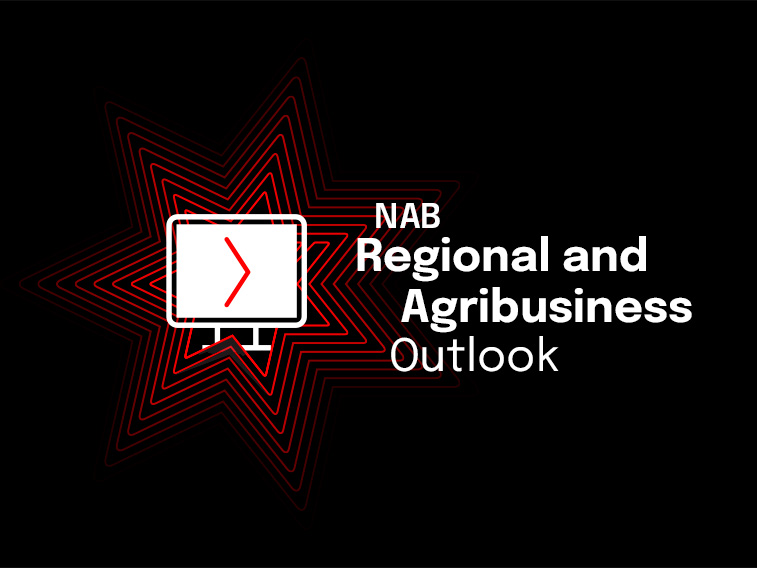The latest NAB Regional & Agribusiness webinar provides insights on the Australian & Global Economies, and a regional and rural property update. Watch the webinar here.

Webinar
Our leading team of economists have broken-down how the 2014 Federal Budget impacts Australian small business. As well as analysis, we outline the key initiatives and how the industry is responding.

Overall, the Budget is moderately positive for SMEs. The creation of a Single Ombudsman should ensure easier Government access for SMEs, reducing red tape. Further, reductions in the company tax rate should lead to higher profitability for some SMEs, as they will largely be spared from the Paid Parental Leave levy, which will impact larger businesses. That said, only one-third of small businesses are incorporated, so the benefit is limited. Moreover, the removal of R&D tax breaks will be a significant disincentive for SMEs involved in the high tech sector, which have benefited from this facility. Businesses will welcome incentives to hire older workers; however, the Australian Apprenticeships Incentives program has been slashed, and will be replaced by a higher-education loan style model, Trade Support Loans. Extending unfair contract provisions for SMEs will offer some measure of protection when dealing with their larger counterparts. Likewise, support for SMEs in bidding for Federal Government contracts will help ensure a more level playing field for SMEs in relation to large firms. The unit will work with small business to develop procurement guidance tailored specifically for them. If this works efficiently it will be a good boost for small business. The enhanced Export grant will benefit both larger businesses and SMEs, but is a welcome development for export-oriented firms nonetheless. Similarly, the Industry Skills fund will assist SMEs in mining, energy and advanced manufacturing. The Entrepreneur’s Investment program is a mixed bag as it has replaced a number of formerly useful programs such as Commercialisation Australia and Industry Innovation Councils. Finally, the increased expenditure on physical infrastructure (e.g. roads) is a positive for SMEs. This is, however, offset by the Temporary Budget Repair Levy with SMEs dependent on discretionary consumer income spending potentially adversely affected. In addition, the fuel excise levy will disadvantage SMEs in segments such as transport, where participants may have less scope to either absorb or pass on these costs compared with their larger counterparts.
• Tax cuts: From 1 July, 2015, the Corporate tax rate will be cut by 1.5% to 28.5%, assisting some 800,000 small and medium sized companies.
• Industry Skills Fund: From 1 January 2015, the Government will establish a training fund for SMEs, allocating $476 million over four years to support specialised training programs. The industries targeted include health and biomedical sectors; mining and energy sectors; and advanced manufacturing. SMEs will be required to make a co-contribution; the amount is dependent on a sliding scale.
• Exporting SMEs: Export-focussed SMEs stand to benefit from an extra one-off capital injection of $200 million to the EFIC (Export Finance & Insurance Corporation) as well as an additional $50 million to the EMDG (Export Markets Development Grants) program.
• Fuel Excise: The reintroduction of a fuel levy surcharge will take place on 1 August 2014, which will be indexed to inflation every six months. Every dollar raised will be linked by law to help fund new roads.
• Extension of Unfair Contract Provision: An estimated $1.4 million will be allocated to the ACCC over four years to ensure that protection against unfair contract provisions are extended to SMEs, as well as to the consumer.
• Improving access to Commonwealth Contracts: The Government has allocated $2.8 million over four years to assist SMEs to ensure they can be more successful in bidding for Government contracts.
• Small Business Ombudsman: $8 million will be spent over four years to create a Small Business Ombudsman, which will act as a single point of contact for SMEs to access Government support programs and engage in dispute resolution.
• Entrepreneur’s Infrastructure Program: An estimated $484.2 million will be spent over five years as part of this program in order to focus on enhancing the capabilities of small businesses to facilitate commercialisation of new products, and boost job creation.
• Commercialisation Australia & Industry Innovation Councils: The Government has earmarked savings worth $845.6 million over five years by scrapping these schemes as well as Enterprise Connect, Australian Industry Participation and Industry Innovation precincts.
• R&D Taxation: The Government is set to cut the R&D Tax incentive scheme, reducing offsets by 1.5%. It is estimated that the Government will realise $620 million over four years from these savings.
• Mature Age Workers & Apprenticeships: Businesses will get up to $10,000, over 24 months, to hire fulltime mature age workers (over 50 years of age) as part of the Restart program.
• Deficit Tax Levy: Individuals with taxable income exceeding $180,000 per annum will pay a Temporary Budget Repair Levy at a rate of two percent for three years. This will impact approximately 400,000 tax payers.
• Tourism Australia’s budget has been increased by an extra $50 million for a new grant scheme that helps small operators promote themselves in international markets.
Industry groups such as the Australian Chamber of Commerce and Industry welcomed some of the measures in the Budget, but expressed concerns as well. Chief executive Kate Carnell said incentives for small businesses, as well as the proposed cut in company taxes would boost investment and job creation. She was also supportive of the enhanced road funding program. However, she also indicated that “there are some cuts to important productivity enhancing measures in trade, vocational education and training and small business support that we will be looking at more closely and expressing our concerns to Government”.
Our economists’ view
Download this article as a fact sheet
For more Federal Budget insight and analysis, visit NAB’s Federal Budget Hub.
© National Australia Bank Limited. ABN 12 004 044 937 AFSL and Australian Credit Licence 230686.